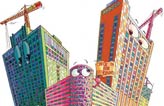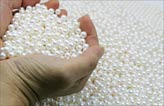Chen Weihua
End the US embargo against Cuba
Updated: 2011-06-07 08:00
By Chen Weihua (China Daily)
I had dreamed of visiting Cuba for a long time. I never thought I would finally make two trips there in less than 10 days.
I had a bad experience in 2005 when I was unable to travel to Cuba, because my J-visa from the US State Department wouldn't allow me to return to the US directly from Cuba. So this time, although I was on a different visa, I was careful to choose a travel agency that sold me a Cuban Tourist Card.
My daughter and I spent some days in Mexico City before we headed to Havana. We were both excited upon arrival, my daughter probably more so, because she speaks Spanish.
Arriving at the Jose Marti airport in Havana, we were greeted by a Cuban immigration officer. The handsome young man, who has a Chinese name Han Lei, told us in fluent Putonghua that Chinese tourists no longer need a visa to come to Cuba.
The warmth was immediate. Passing through immigration checkpoints has never been pleasant, but there was no hassle in Cuba.
I have cared about Cuba for many years and have written about the country, from a DVD review about Cuban legendary leader Fidel Castro to my opposition to the inhuman US blockade.
But my image of Cuba before the trip mostly came from the photo album by Jeffrey Milstein, which I found in the Barnes and Noble bookstore in New York.
The bright colors, alluring architecture and the amazing people in the pictures only made me more eager to visit Cuba.
We stayed at a hotel on the Malecn - the broad esplanade known as one of the most scenic places in the world for jogging - that had a fantastic ocean view from the balcony and a city view from the bedroom.
Walking through the Habana Vieja, the old town of Havana, we were absorbed by buildings with diverse architectural styles. From the bright colors, you can tell that many of these buildings have been restored in recent years. Many are still being renovated, but even the ones that are in disrepair are just as charming and there are many of them in Havana.
While the living standards for most Cubans are still low, the street life as we explored from one narrow street to the other from Vieja to Centro Habana to Vedado is rich and vibrant.
We watched a flamenco show and listened to a jazz performance till 2 am in the morning.
The Havana streets are probably the safest in the world and we chose to walk to the hotel along the Malecn around 2 am.
Many Chinese people in China probably don't know that Chinese is one important ethnic group in Cuba along with Spanish and Africans. They were brought to Cuba more than 160 years ago to replace the African slave laborers in sugarcane plantations after the slave trade was banned.
But in Havana, you see mostly Chinese with mixed blood. A beautiful woman setting up a handicraft stand in Habana Vieja, who looks Caucasian to us, said she has a quarter Chinese blood. It was the same for a young man, who looked of African origin.
Cuba is at a historic turning point with the 6th Congress of the Cuban Communist Party already setting the agenda for social and economic reform. You can feel the mood; it's like China in the late 1970s or early 1980s when the country embarked on its economic reform.
You just have to see the beautiful coastline in this Caribbean nation to realize that tourism, if well developed, could help greatly raise the living standards of its people.
That, of course, will happen much sooner, if the US government lifts its inhuman embargo on Cuba that has been opposed by almost every other nation on the planet.
The author is deputy editor of China Daily US edition. E-mail: chenweihua@chinadaily.com.cn
(China Daily 06/07/2011 page8)
Specials

Birthday a new 'starting point'
China's national English language newspaper aims for a top-notch international all-media group.

Room at the inn
The Chinese hotel industry experiences a building boom, prompting fears of oversupply.

Pearls of wisdom
Chinese pearl farmers dominate the world market but now want to work smarter, not harder